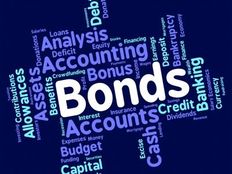
There’s no question the bond prices are susceptible to an interest rate hike, but there is some disagreement over the impact of such an action. With falling commodity prices and depressed energy prices, the financial markets aren’t convinced inflation will rise dramatically following a rate hike – at least when factoring in energy. The impact of an interest rate hike therefore could be relatively muted for most bonds.
While municipal bonds have been troubled performers in the recent past – due in large part to Puerto Rico’s default – the asset class may be well-positioned to benefit from a rising interest rate environment. Muni yields tend to trend around 85% of their taxable equivalents – which creates a buffer of sorts against a broader bond market decline – while rising tax revenue and less volatility due to an oversized retail investor base make for a desirable asset class.
Supply and Demand
The municipal bond market was hit with a large supply this year, thanks to cities taking advantage of low interest rates to refund old debt. With rising interest rates, it’s likely muni bond issues will slow down and improve the technical side of the market. New issues already have been falling since the middle of the year, with September being the lowest issuance on record in more than a year – a trend that’s likely to continue into 2016.
The interest rate hike also could lead capital to flow out of equities and traditional bonds into muni bonds, as investors look to reduce risk and avoid taking a hit from lower bond prices. With muni bonds being one of the few desirable asset classes in such an environment, the demand side of the market could see a significant spike. This may be especially pronounced if the market has a knee-jerk reaction to an interest rate hike in December.
The combination of reduced supply and greater demand could boost muni bond prices, despite the negative implications of an interest rate hike. At the very least, these dynamics could reduce downside pressure on the asset class and help munis outperform other bonds.
Price Considerations
The Federal Reserve has made no secret that it plans to raise interest rates as soon as the economic picture improves. After years of quantitative easing and low interest rates, the central bank is keen on avoiding a prolonged deflationary spiral (e.g. Japan’s Lost Decade) and reducing the record levels of consumer borrowing that could contribute to a bubble in the economy and potentially another financial crisis.
There is some indication that muni bond prices already have priced in an interest rate hike to some extent, with the anticipation building over the past several months. In addition, it’s worth noting that each of the last three rising interest rate environments led to different reactions by the bond market – although in every case, investors who held portfolios through the cycle ended up generating positive returns in their portfolios.
The takeaway is that prices already may reflect an interest rate hike, while it’s difficult to predict exactly how much muni bonds will be impacted. When looking at the past three rate hike cycles, however, investors have fared pretty well on the whole.
The Bottom Line
Bonds may be negatively impacted by an interest rate hike, but the extent of the damage remains to be seen. To mitigate potential losses, investors may want to consider shifting into muni bonds, which could benefit in many ways from an interest rate hike. Muni bond funds provide one way of doing so, while laddering individual muni bonds is a second option that may be attractive to more sophisticated investors.
Image courtesy of Stuart Miles at FreeDigitalPhotos.net






